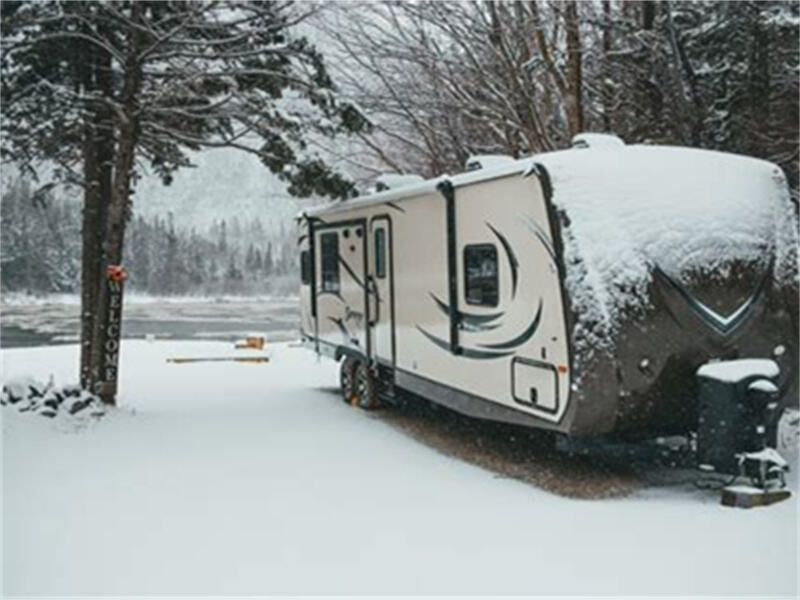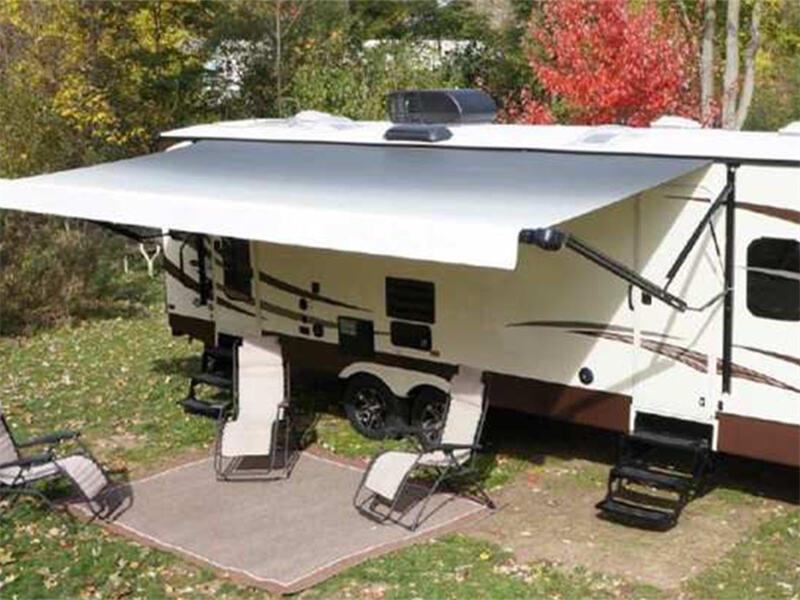I. Regional Background Overview (Northeastern United States: New York, New Jersey, Massachusetts)Estados Unidos.
Sa rehiyon ng kanlurang hilaga ng Estados Unidos, kabilang ang mga estado tulad ng New York, New Jersey, at Massachusetts, mayroon mga tiyak na kagustuhan ang mga gumagamit ng RV kapag pumipili elektrikong awnings . Ang mga kagustuhang ito ay higit na naapektuhan ng klima at ugali sa paggamit.
Una, mula sa pananaw ng katangian ng klima, ang rehiyon ng kanlurang hilaga ay may malinaw na mga panahon na may mabigat na pag-ulan ng snow at mababang temperatura sa taglamig, samantalang mainit at mahalumigmig ito sa maikling panahon ng tag-init, at madalas umulan at malamig ang tag-araw at taglagas. Ito ay nangangahulugan na ang sunshade ay hindi lamang kailangang makatiis ng direktang sikat ng araw kundi dapat din panatilihin ang istruktura ng kahoy at tibay ng tela sa malamig, mamasa-masa, at kahit na mga snowy na kapaligiran. Samakatuwid, mas mataas ang hinihingi ng mga gumagamit pagdating sa paglaban sa lamig, paglaban sa amag, pag-alis ng tubig, at paglaban sa hangin ng sunshade.
Pangalawa, ang mga tela na anti-freezing at lumalaban sa lamig ay naging isa sa mga pangunahing kriteria sa pagpili. Ang mga user ay karaniwang nagpipili ng mga awning na may PVC o Vinyl coating. Ang mga tela na ito ay hindi lamang lumalaban sa mataas na temperatura at ultraviolet rays kundi mayroon din mas matibay na katangian sa mababang temperatura at hindi madaling mabasag kapag inilipat ang awning pagkatapos ng pag-ulan ng yelo. Ang ilang mga high-end na user ay nagpipili ng mga produkto na may antibacterial at mold-resistant na coating upang maiwasan ang amoy at pagbabago ng kulay sa panahon ng basa o mahalumigmig na panahon.
Sa parehong oras, mabilis na nagbabago ang panahon sa rehiyon ng hilagang-silangan, kasama ang madalas na pagkulog at biglang hangin. Dahil dito, ang awtomatikong retraction function at wind and rain sensing system ay naging mga madalas na hiniling na tampok. Maraming mga user ang nagsasabi na kapag biglang bumagyo habang taglamig o gabi-gabi sa camping site, hindi kayang-retract ng tao ang awning sa tamang oras, kaya mas gusto nilang pumili ng RV awning products na may intelligent sensing at automatic retraction upang maprotektahan ang awning system at ang mga gilid na pader ng RV.
Sa kabuuang uso, ang mga inaasahan ng mga user ng RV sa hilagang-silangan para sa Rv awnings ay isang pinagsamang pangangailangan ng "cold and wet resistance + automatic safety + stable structure". Hindi tulad ng mga user sa timog-kanlurang rehiyon na nagpapahalaga sa sun protection at mga user sa timog-silangang rehiyon na gusto ang moisture resistance at mold resistance, binibigyan ng higit na diin ng rehiyon ng hilagang-silangan ang protektibong performance at passive safety ng awning sa matinding kondisyon ng panahon. Nakakaapekto rin ito nang direkta sa estratehiya ng brand sa pamilihan sa rehiyon na ito .


Ii. Pagsusuri ng Karaniwan Mga pangangailaan Elektriko RV Awning Mga User sa Hilagang-Silangang Estados Unidos
Ang Hilagang-Silangang Estados Unidos ay may mahabang, malamig na taglamig na may mabigat na pag-ulan ng snow, maulan at mahangin na tagsibol at taglagas, at maikling tag-init na may malaking pagbabago ng temperatura. Dahil sa klima nito, hinahangaan ng mga lokal na may-ari ng RV ang functionality, kaligtasan, at weather resistance kapag pumipili ng electric awnings.
Proteksyon sa Taglamig at Proteksyon sa Bigat ng Snow
Ang mabigat na niyebe at pagtambak ng yelo ay nagdaragdag ng bigat sa istraktura. Ang mga gumagamit ay hinahanap ang mga awning na may katangiang nakakatagala sa niyebe, tulad ng awtomatikong pag-urong, upang maiwasan ang pagkasira ng istraktura sa panahon ng mabigat na pag-ulan ng niyebe o biglang pagbabago ng panahon. Ang ilang mga nasa mataas na antas na gumagamit ay interesado sa mga waterproof membrane na pambatok sa niyebe o mga sistema ng pagtanggal ng niyebe na may pag-init.
Mabilis na Pag-alis ng Tubig at Anti-Drip
Madalas at may hangin ang pag-ulan sa tagsibol at taglagas, kaya kailangan ng mga awning na may mga waterpoof na kasaliw at disenyo ng pagbaling na mabuti upang tiyakin ang mabilis na pag-alis ng tubig at maiwasan ang pagtambak ng tubig at pagtulo, na nagpapahusay sa karanasan ng gumagamit sa panahon ng tag-ulan.
Mga Materyales at Istraktura na Nakakatagal sa Lamig
Ang mababang temperatura ay maaaring magdulot ng pagkabigkis at pagkabulok ng mga materyales. Kaya kailangan ang mga malambot at matibay na tela na nakakatagal sa lamig, kasama ang mga metal o mataas na lakas na suporta na komposit na nakakatagal sa lamig upang matiyak ang matagalang pagiging matatag. One-touch remote control at intelligent sensing
Ang pinasimple na operasyon ay lalong mahalaga sa panahon ng malamig. Gustong-gusto ng mga user ang one-touch remote control, mga kontrol sa loob ng sasakyan, o operasyon sa pamamagitan ng mobile phone, kasama ang mga sensor ng hangin at yelo para sa awtomatikong pag-urong at pag-deploy, na nagpapataas ng kaginhawaan at kaligtasan.
Katatagan ng istruktura
Kinakaharap ng Hilagang-silangan ang mga hamon mula sa bigat ng yelo at malakas na hangin. Ang mga awning ay dapat magkaroon ng mataas na rating sa paglaban sa hangin at secure na koneksyon, na pinapanatili ang matibay na tension ng tela. Ang ilang mga high-end model ay mayroong maramihang punto ng pag-aayos para sa pinahusay na paglaban sa hangin at yelo.
Pandekorasyon at paniniti
Nais ng mga user ang hitsura na umaayon sa istilo ng RV at nagbibigay ng lilim sa tag-init at pagkakabukod-init sa tagsibol at taglagas, na nagtatamo ng balanse sa pagitan ng kasanayan at aesthetics.
Pangkalahatan, ang mga user sa Northeast ay nagpapahalaga sa paglaban sa lamig, proteksyon sa snow, proteksyon sa ulan, paglaban sa hangin, at maraming gamit. Dapat matugunan ng mga produkto ang matinding kondisyon ng klima sa salig sa istruktura, materyales, at katalinuhan, habang nag-aalok din ng aesthetic at kaginhawaan upang makalikha ng kompetitibong bentahe sa rehiyon n

 EN
EN
 AR
AR HR
HR CS
CS NL
NL FI
FI FR
FR DE
DE EL
EL HI
HI IT
IT JA
JA KO
KO NO
NO PL
PL PT
PT RO
RO RU
RU ES
ES SV
SV TL
TL ID
ID SR
SR SL
SL UK
UK VI
VI SQ
SQ HU
HU MT
MT TH
TH TR
TR MS
MS AZ
AZ KA
KA LO
LO MN
MN MY
MY KK
KK KY
KY
